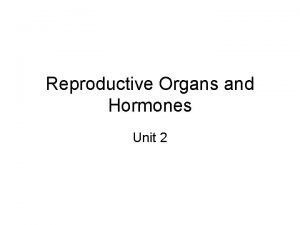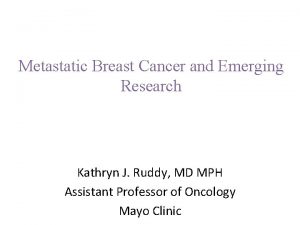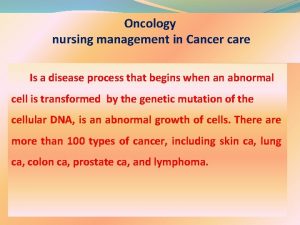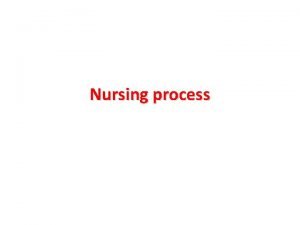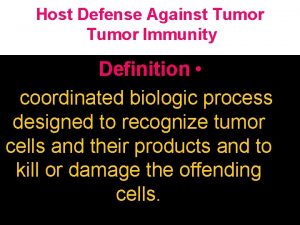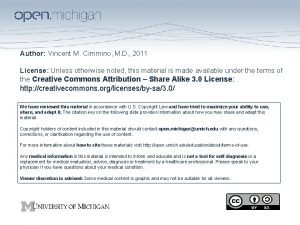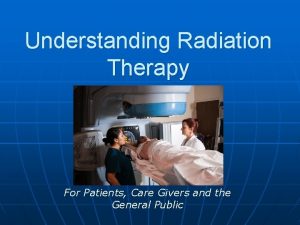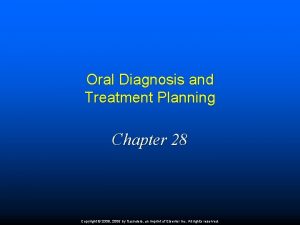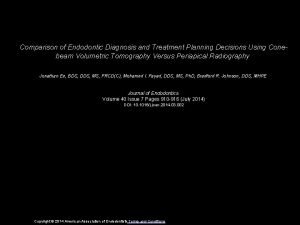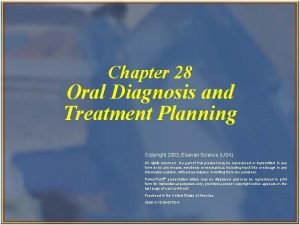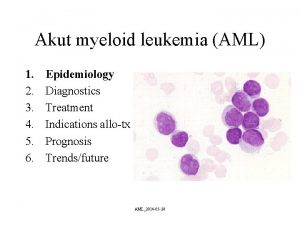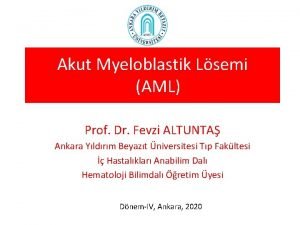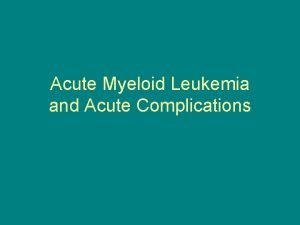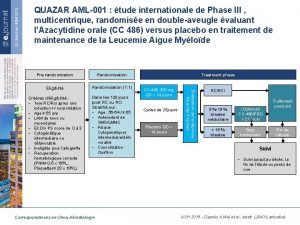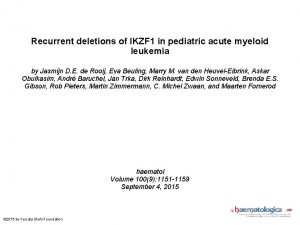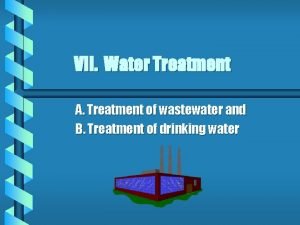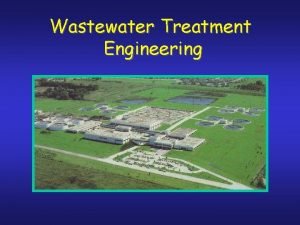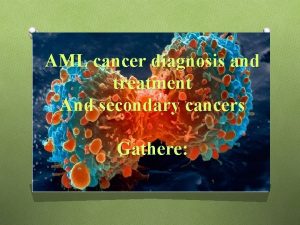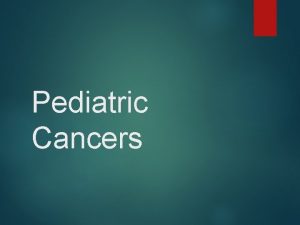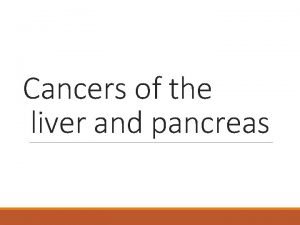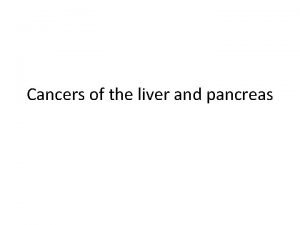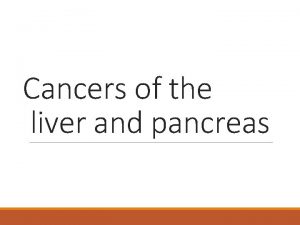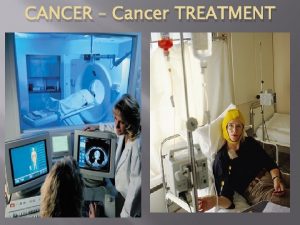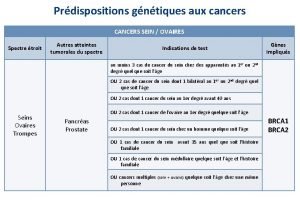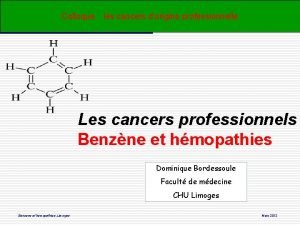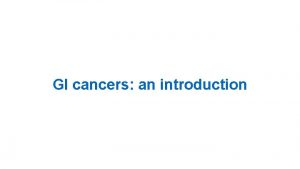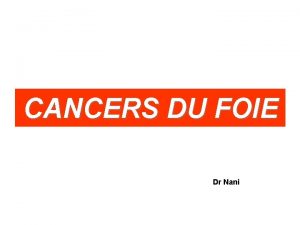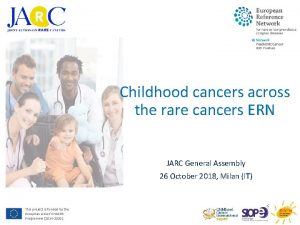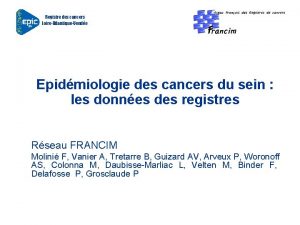AML cancer diagnosis and treatment And secondary cancers







































- Slides: 39

AML cancer diagnosis and treatment And secondary cancers Gathere: 1

Leukemia 2

Calssification who 3

4

5

6

AML with recurrent genetic abnormalities 7

AML with myelodysplasia-related changes 8

Molecular Vision O Mutated genes were classified into 1 of 9 functional categories: transcription factor fusions, the NPM 1 gene, tumor suppressor genes, DNA methylation-related genes, signaling genes, chromatin-modifying genes, myeloid transcription factor genes, cohesin complex genes, and spliceosome complex genes. O Most mutations in stem cells or progenitor preleukemic occurs early in leukemogenesis That may persist after treatment and leads to clonal expansion during recovery, and cause recurrent disease. 9

Diagnostic procedures O Morphology O Immunophenotyping Expression of cell-surface and cytoplasmic markers for the diagnosis of AML and MPAL 10

Cytogenetics and molecular cytogenetics Molecular classes of AML and concurrent gene mutations in adult patients up to the age of ∼ 65 years 11

Molecular genetic testing Tests/procedures for a patient with AML 12

Effective factors O Pretreatment factors O Patient-related factors. O AML-related genetic factors. O Factors after diagnosis. O Monitoring of MRD O 2017 ELN genetic O risk stratification 2017 ELN risk stratification by genetics 13

MDS-AML overlap/secondary AML O Genetic basis O Blast count 14

Current therapy Intensive induction therapy Anthracycline dose level. Cytarabine dose. Role of other drugs. FLT 3 INHIBITORS. GEMTUZUMAB OZOGAMICIN. CPX-351. PURINE ANALOGS. Intensive postremission therapy Conventional postremission therapy. 15

Current therapy O CONVENTIONAL INTENSIVE CONSOLIDATION. O INTENSIVE CHEMOTHERAPY FOLLOWED BY AUTOLOGOUS HCT. O MAINTENANCE THERAPY. O Allogeneic HCT. O INDICATIONS. O MYELOABLATIVE CONDITIONING VS RIC. O COMORBIDITIES AND RISK SCORES. O NEW MODALITIES. O Older patients not considered candidates for intensive chemotherapy 16

Relapsed disease and primary refractory disease O Prognostic markers O Salvage treatment 17

Therapy-related AML O Biology of t-AML O Treatment of t-AML 18

O Today's advances in radiation therapy and chemotherapy have been made to increase the chances of survival of patients with cancer. O Of all the possible side effects of cancer treatment, a secondary cancer is very serious. O In general, an inherited gene or carcinogens in touch with a person's predisposition to various cancers. 19

Treatments associated with secondary cancers Radiation O Radiation therapy as a potential factor in causing cancer had known for years. O Diseases caused by prior exposure to radiation: O Acute myelogenous leukemia (AML) O Chronic myelogenous leukemia (CML) O Acute lymphoblastic leukemia (ALL) 20

O Risk of leukemia after radiation therapy: O 1. How many times in the bone marrow has been exposed to radiation. O 2. What is the amount of radiation into the active bone marrow. O 3. frequency radiation have been many times. 21

O Risk of solid cancer after radiation therapy depends on the following factors: O The amount of radiation O The treated area O Age of the patient during radiation therapy O (Most of these cancers will not be seen until 10 years after radiation therapy). 22

In general, the risk of solid cancers after radiation increases with increasing radiation exposure. The treated area is also very important, because these cancers tend to occur more in the near area of radiation (such as breast and thyroid) Age is an important factor when radiation therapy (risk of breast cancer after radiation therapy at a younger age than when the person is older, as well as cancers of the lung, thyroid, bone, stomach and gastrointestinal tract). Some cancer if chemotherapy is combined with radiation therapy increases the risk of secondary cancer 23

Chemotherapy O Acute myelogenous leukemia (AML) O Acute lymphocytic leukemia ALL ((5 to 10 percent of leukemia induced by chemotherapy) O Studies on patients between 1870 and 1980 showed that the risk of developing AML after certain types of chemotherapy drugs known as alkylating agents are, more. This type of medication in the treatment of cancers such as Hodgkin's disease, non-Hodgkin's lymphoma, ovarian, lung and breast cancer is used. 24

Alkylating agents that cause leukemia are usually: O Chlormethine O Chlorambucil O Cyclophosphamide O Melphalan O Smvstyn O Lomustine O Carmustine O Prdnymvstyn O Busulfan O Dhydrvksybslfan 25

Chemotherapy and related drugs O Risk of disease to the medications, for the O O treatment of long, high intensity drug administration depends (Research has shown that the risk of leukemia after two years and in 5 to 6 years after treatment with alkylating agents to peak and then gradually wanes) Cisplatin: Increased incidence of leukemia (cancer of this type of treatment is very difficult to answer). Cisplatin in the treatment of many cancers such as lung, testis and ovary is used. As the dose increases the risk of cancer goes up. And if the drug together with radiation therapy patients also stand the risk of cancer is higher. 26

Topoisomerase II inhibitors O Cause leukemia, particularly AML is. O Drugs in this class include: O Atvpvsyd: lung cancer, testicles and is associated with increased risk AML O Tnypvsyd: the incidence of AML increases O Mitoxantrone: causes acute leukemia O Faster than alkylating drugs are known to cause leukemia (seen 2 to 3 years of treatment) 27

Anthracyclines O AML may be like: O Doxorubicin, daunorubicin, and Apyrvbysyn O Topoisomerase II inhibitors, but they caused leukemia. 28

Lymphogranuloma O More than three times the general population with cancer are secondary. O Increased risk of acute leukemia in patients with Hodgkin's disease who O O O O underwent chemotherapy, especially with alkylating agents were seen. Which is a drug combination MOPP. Leukemia who are treated with ABVD regimen is high. Hodgkin's disease treated with radiation therapy resulted in a slight increase in the incidence of leukemia. Age (over 40 years). Increase in the amount of chemotherapy Radiation therapy for Hodgkin's disease has been linked to the development of solid tumors. The risk is highest in areas that are in the path of radiation. The most common secondary cancer in women treated for Hodgkin's disease, breast cancer With the passage of time has changed the treatment of Hodgkin's disease, chemotherapy with alkylating agents and, if necessary, to less radiation, it 29 is used by lower doses. These changes reduced the risk of a second cancer.

Care after treatment O Doctors must be careful that this solid tumors, leukemia, non-Hodgkin lymphoma and relapsed Hodgkin's disease gradually in the body as well. O Encouraged in order to reduce the risk factors for lung cancer O Beginning early screening for breast cancer in women who undergo radiation therapy to the chest were that includes regular examinations and mammographic breast is a breast MRI is doing. O Patients who have had radiation to the abdomen should note any abdominal problems and inform it: such as weight loss due to dieting is not one's own, persistent 30 diarrhea, and abdominal problems

Non-Hodgkin lymphoma The improvement of non-Hodgkin lymphoma, (NHL) at risk of a second cancer After treatment, prone to cancers such as malignant melanoma, lung cancer, kidney cancer, Kaposi's sarcoma, cancer of the head and neck, colorectal cancer, thyroid cancer, bone cancer and soft tissue, and bladder cancer as well as leukemia and Hodgkin's disease Care after treatment Non-smoking 31

Testical cancer O Most cancer, testicular cancer, a testicular cancer seen after the others. O Lower risk of cancer in people who have chemotherapy. O Patients who are treated for testicular cancer, half who are treated for O O O Hodgkin's disease are at risk of second cancers. Compared with the general population, people who have recovered from testicular cancer are two times more likely to develop cancer of the testicles are outside. Increased cancer risk over time and depend on the type of treatment. The most common cancer after radiation therapy to the abdomen on testicular cancer, including cancer of the bladder, colon, pancreas and stomach, rectum, kidney, prostate, melanoma, and leukemia is the connective tissue. The risk of cancer with high-dose radiation therapy or chemotherapy when combined with radiation therapy has increased. 32 In recent years, smaller doses of radiation used

Breast Cancer O Women with breast cancer 3 to 4 times more likely than O O others on the other side are also new cancer (the most common secondary cancer). Prone to cancers of the ovary, uterus, lung (smoking), colon, rectum and the connective tissue while the risk of melanoma and leukemia is not unlikely. Radiation therapy is more likely sarcoma cancer risk, particularly in the areas of blood vessels, connective tissue and bone increases. Received tamoxifen for 5 years, not only significantly reduce the risk of recurrence, which has a 50% chance of developing a second cancer in the other side is low. There is a slight chance that the cancer is leukemia patient. 33

Aftercare O Annual screening for breast cancer (If there is no breast tissue) is. O Feminine care issues are also very important for uterine cancer. O Encourage non-smoking 34

Cervical cancer O Cervical cancer is often caused by infection with human papilloma virus. O Those who have recovered from the disease, are at risk of suffering from other cancers associated with the virus, such as the anus, vulva, vagina. O Survivors at increased risk of cancer associated with smoking, such as lung, bladder and pancreas are. Radiation cervix cancer of the colon, rectum, connective tissue and increase stomach. And finally radiation can also cause an increase in the incidence of leukemia and non-Hodgkin's lymphoma. 35

Care after treatment O The feminine care issues O Need to check for signs of cancer of the vulva and vagina, as well as recurrence in early disease O Encourage non-smoking 36

Childhood cancers O Scientists have found that treatment of childhood cancers in life affect children's health. Which is known to late complications. 37

Generally: O The risk of secondary cancer should be evaluated with the benefits of treatment. For many new cancer treatments that cause secondary cancer are long-term effect is still unknown. The need for continuous follow-up of cancer patients is important because of its improved through better understand long-term effects of cancer. 38

39
 Female reproductive system
Female reproductive system Her2 positive cancers
Her2 positive cancers Mylosuppresion
Mylosuppresion Disturbed thought process nanda
Disturbed thought process nanda Lab diagnosis of cancer
Lab diagnosis of cancer Treatment of inflammatory breast cancer
Treatment of inflammatory breast cancer Radiation therapy side effects
Radiation therapy side effects Types of nursing diagnosis
Types of nursing diagnosis Medical diagnosis and nursing diagnosis difference
Medical diagnosis and nursing diagnosis difference Second phase of nursing process
Second phase of nursing process Objectives of nursing process
Objectives of nursing process Chapter 28 oral diagnosis and treatment planning
Chapter 28 oral diagnosis and treatment planning Tongue position classification
Tongue position classification Endodontic diagnosis and treatment planning
Endodontic diagnosis and treatment planning Chapter 28 oral diagnosis and treatment planning
Chapter 28 oral diagnosis and treatment planning Perbedaan diagnosis gizi dan diagnosis medis
Perbedaan diagnosis gizi dan diagnosis medis Cytogenetics
Cytogenetics Aml diş eti hipertrofisi
Aml diş eti hipertrofisi Aml symptoms
Aml symptoms Aml textil
Aml textil Aml 001
Aml 001 Aml diş eti hipertrofisi
Aml diş eti hipertrofisi Aml program assessment
Aml program assessment Cybersecurity framework
Cybersecurity framework Stephen aml
Stephen aml Pediatric aml
Pediatric aml Aml kyc
Aml kyc Aml workbench
Aml workbench Pas principle
Pas principle Azure machine learning workbench
Azure machine learning workbench Mastercard aml
Mastercard aml Aml.l
Aml.l John martinko
John martinko Wastewater treatment process primary secondary tertiary
Wastewater treatment process primary secondary tertiary Secondary treatment process
Secondary treatment process Secondary air treatment in pneumatic system
Secondary air treatment in pneumatic system Secondary wastewater treatment
Secondary wastewater treatment Secondary wastewater treatment
Secondary wastewater treatment Chapter 24 the immune and lymphatic systems and cancer
Chapter 24 the immune and lymphatic systems and cancer Chapter 24 the immune and lymphatic systems and cancer
Chapter 24 the immune and lymphatic systems and cancer
